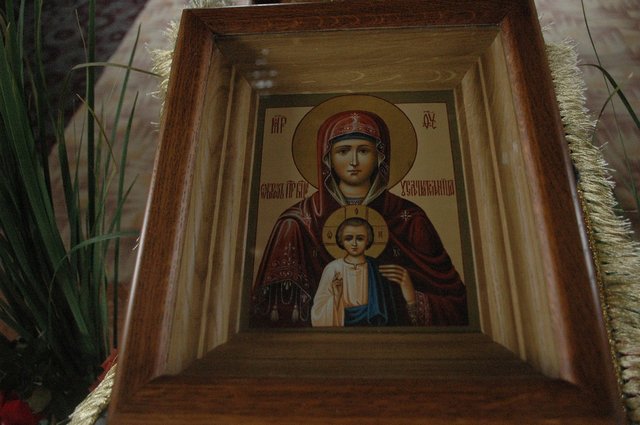
According to the dictionary, icon painting is a type of art. However, this is a very special kind of art, and its definition is not limited to “religious subject” and “worship purposes”. The icon is painted so that the person who looks at it might receive support in his conversation with the Almighty. The icon is like the reflection of the world on high, a tangible object that becomes a kind of mediator between the praying person and the One to whom he offers his prayer.
Undoubtedly, what happens deep in the icon painter’s soul is solely his and God’s secret. The icon, however, is certainly the fruit of this dialogue with the Lord, the fruit of prayer. Its creation is impossible without the interaction with God.
Anyone who is artistically gifted – both a monk and a layman – can become an icon painter, after completing relevant training. An individual who started out as an artist can become an icon painter, too. That person could have been painting pictures, looking for his identity, trying out different techniques, but then realized that he wished not just to express his inner world and his perception of the outside world, but to serve God.
Being an icon painter is, of course, a job for which the artist receives a paycheck to feed himself and his family. It’s also a ministry. You cannot paint icons from 10:00 to 18:00, and then forget about your ministry until the next morning. Getting ready to paint any icon is not just about honing your artistic skills; it is a long, sometimes frustrating journey of self-improvement and following Christ. It is when the artist prays to become worthy of his craft; when he hopes that the fruit of his labors might one day help someone else to meet the Savior.
Translated by The Catalogue of Good Deeds
Source: https://foma.ru/dolzhen-li-ikonopisets-byit-veruyushhim-chelovekom.html




This is a complete lie. It is a subjective article with no sources to defend its position as to whom and who may not paint icons. The authors opinion is just that, an opinion and it is a wrong one which stands against Sacred Tradition of the Orthodox Church. According to the Council of Constantinople held in 869-870:
“….It is not good therefore that these things be done by unworthy persons. This is why, under no circumstances, do we authorize excommunicated persons [heretics, schismatics] to paint icons in the holy churches; for the same reason, they cannot teach until they have turned from their error. After this decision which we have made, if any such person attempts to paint holy icons in the church, let him be deposed if he is a cleric and deprived of the holy Mysteries if he is a layman.”
The decree was written during a time that there were no Christian religions other than the orthodox church. The decree by the Council has been carried over to refer not only to those Orthodox who have abandoned the faith but to any denominations as well.
This articles stands in defiance of what the Orthodox Church has always taught regarding who and who may not paint icons. Those outside the faith, are not baptized into the fold of the Church, they are thus deprived of Grace and their “icons” are nothing more than empty vessels or religious pictures.
https://www.traditionalbyzantineiconography.com/2017/11/09/he-alliance-between-the-deconstruction-of-orthodox-iconology-and-modernized-orthodox-theology/